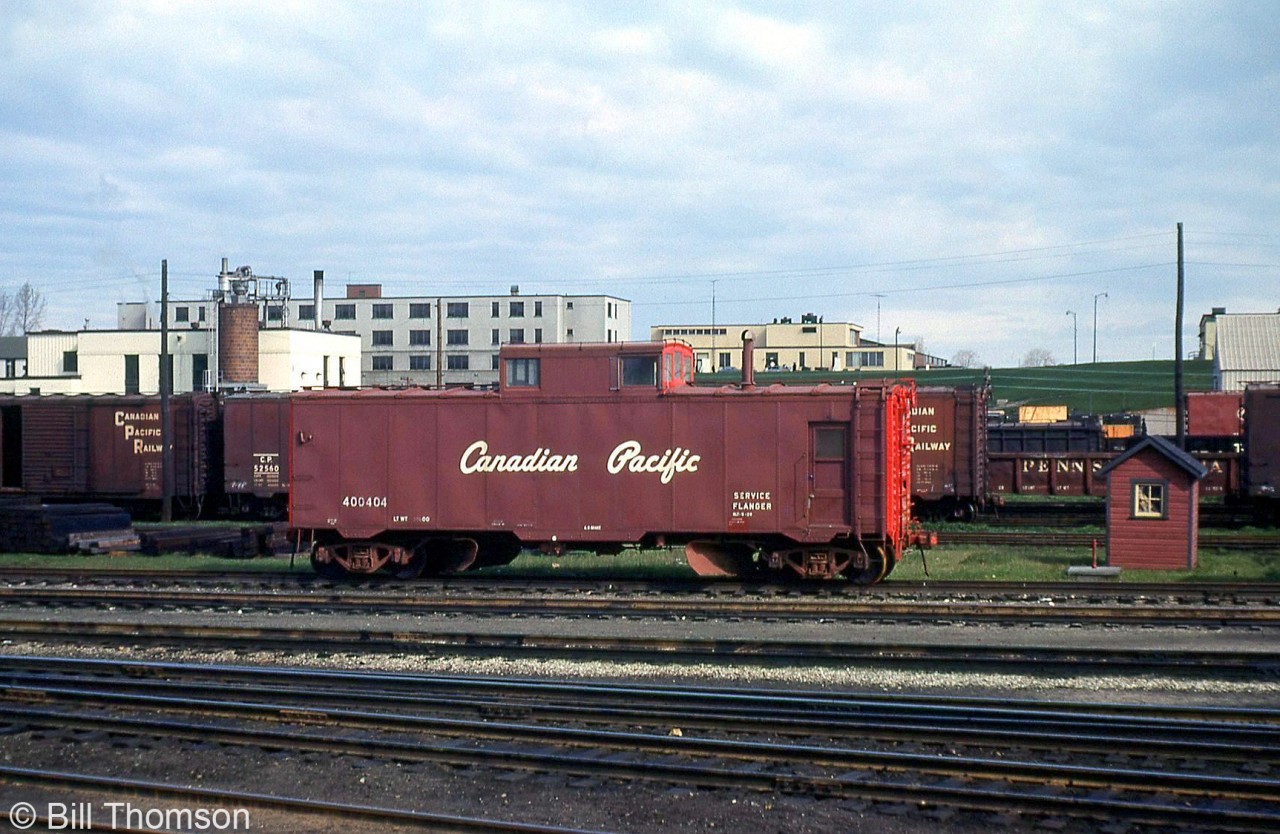|
Caption: Canadian Pacific flanger 400404 is seen amid other freight equipment in the yard in London in 1966. Like CN, CP also had their own flanger cars stationed around the system for clearing snow and ice from the flangeways between rails.
Like many other flangers CP had, this car had been converted from one of CP's fleet of steel "minibox" boxcars originally built in 1929/1930 (that were shorter in height than most regular steel boxcars). As newer larger boxcars displaced them, many miniboxes migrated into maintenance of way service, including becoming tool cars, bunk cars, flangers, and generator cars. On this car, twin flanger blades have been mounted behind each of the trucks, a cupola added to the roof, access doors cut into the sides, and the old center 5' sliding door has been removed and opening covered over to match the rest of the body.
|



The duties of flangers were ‘re-assigned’ to snowplows & now, neither are needed on main line tracks in the east at least.I have worked snowplows on the double track from Guelph Jct to Streetsville on CP Galt Sub, where the only reason to plow was to remove built up snow between the rails. Before CTC, the westward track would accumulate snow because most trains ran slow uphill. The packed snow once over rail height would actually cause some trains to stall, because it created a lot of friction against wheels.After CTC was installed, many eastbounds used the north (former westward) track & they would blow the snow out before it accumulated. Climate change seems also to have been a factor as less snow seems to fall in that area now vs decades ago.